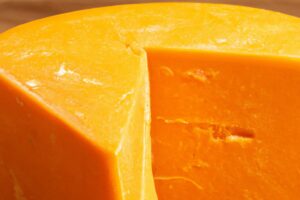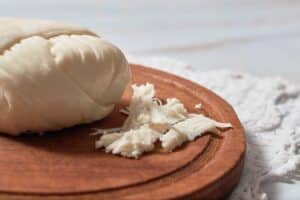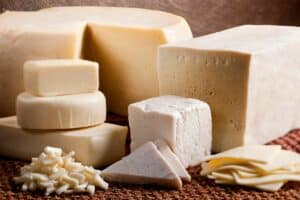Emmental cheese may be delicious, but there will be times when you need to reach for a substitute to save your recipe or your waistline. Whether it’s because you just used your last wedge at the family picnic or you need cheese with a few more health benefits, it can be really helpful to know what cheeses you can tag in to finish a dish.
The most common substitute for emmental cheese include Gruyere, French Comte, Jarlsburg, Cheddar, and Gouda.
What is Emmental Cheese?
Emmental cheese can also be called Emmentaler, Emmenthal, or Swiss cheese. It is a yellow medium-hard cheese. It’s named after the Emmental, which is the valley of a river near the town of Berne.
It was first created around 1292 in that very same area, thus why its name has such strong ties to the location. While it might sound like an exotic cheese, it is still made from cow’s milk. You need about 12 liters of milk to make one kilogram of cheese.
When the rind is kept clean, the cheese cures from the inside using propionic acid bacteria, which produces carbon dioxide. This is what produces the big holes you see in Emmental cheese. It takes about six months for the cheese to ripen completely. When it is completely ripe, the inside is a uniform light yellow color with different-sized holes.
It has a mildly nutty, sweet flavor and a firm, silky texture. Looking for plating ideas, you can always consider serving it on a cheese platter with a helping of your favorite fruit and nuts, or you could even layer it into sandwiches for an even less intense experience.
5 Recommended Emmental Cheese Substitute
The 5 most common emmentaler substitute:
- Gruyere Cheese
- French Comte
- Jarlsberg Cheese
- Cheddar Cheese
- Gouda cheese
Gruyere as an Emmentaler Cheese Substitute
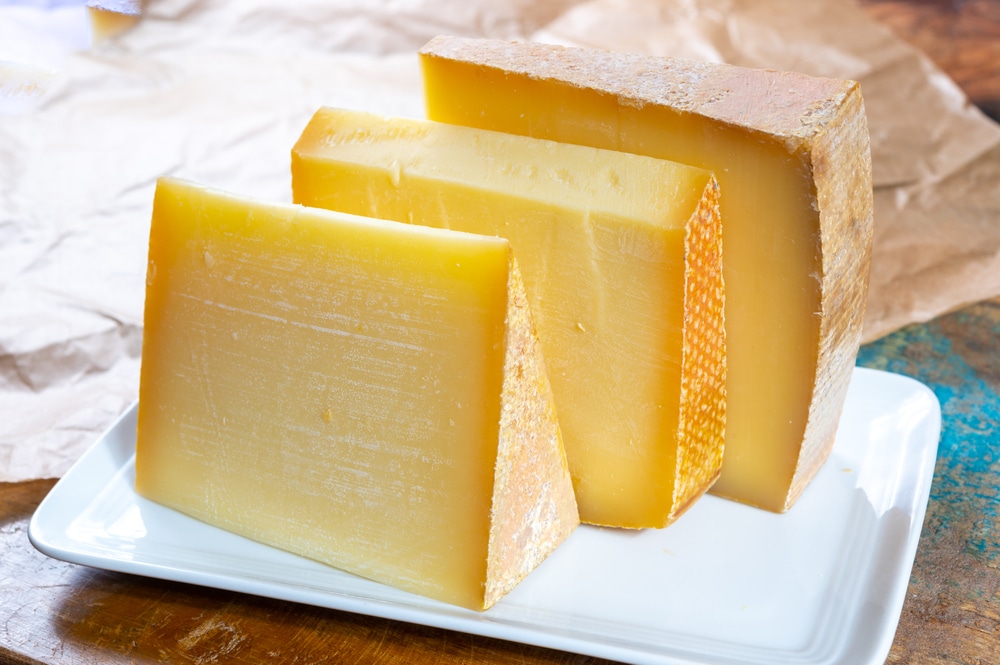
Gruyere is the best Emmentaler cheese substitute because it’s in the same family as swiss cheese. Gruyere has a nutty, earthy taste to it and ends with a fruity touch. It’s named after the town of Gruyeres in Switzerland. It’s usually aged for six months or longer and is made from whole cow’s milk.
However, It is a bit saltier than Emmental. Its body is dense at first and then becomes flaky and earthy tasting when it ages and has a hard rind covering it. It has only a few small eyes.
You can put Gruyere cheese in salads, mix it with pasta, put it on sandwiches, in soups and quiches when the recipe asks for Emmental. It goes great with ham and chicken. It’s also great in quiches and gratins, as well as fondues and dips.
It has 95 mg of sodium – which makes up four percent of the recommended daily intake and helps your body stabilize blood pressure. You can also benefit from the vitamins it contains – vitamins A, B12, B6, and K, thiamin, pantothenic acid, and folate.
If you’re using Gruyere as a substitute for Emmental cheese, use the same amount of Gruyere that you would use of Emmental in the recipe. It’s slightly less aromatic, but it has a lot of flavors and melts easily.
Can’t find Gruyere cheese? Lookout for common cheese similar to gruyere.
French Comte
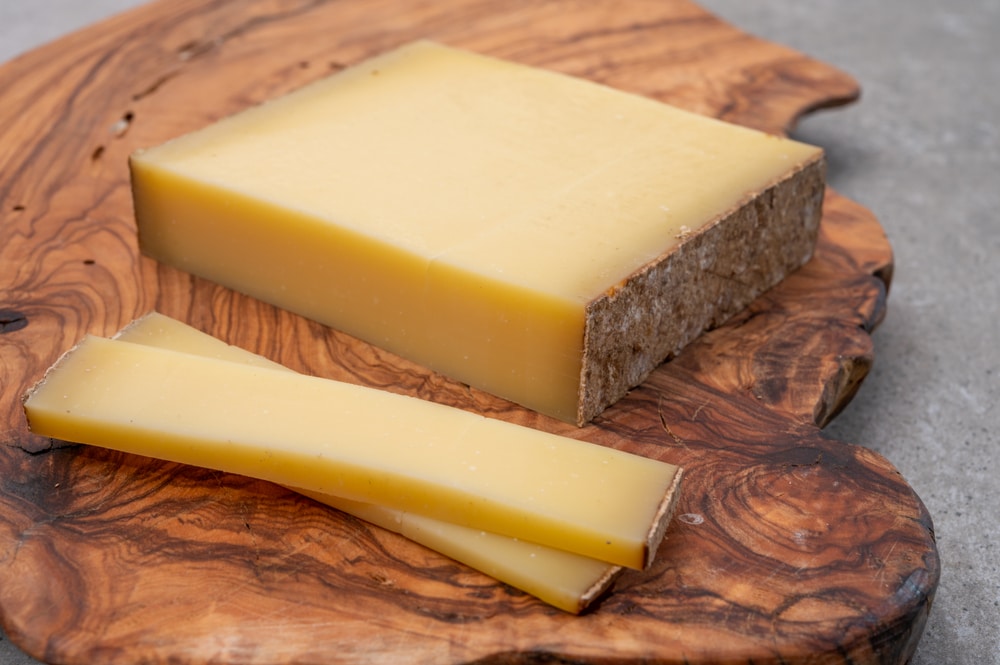
As its name suggests, French Comte cheese comes from France, specifically the Jura Massif countryside. Villagers first made it in the 12th century, and since then, it’s been a treasure in that region. It’s made from raw cow’s milk and takes 4 months to 2 years to age.
It’s similar to Emmental cheese because of its firmness, milk source, and melting ability. There are two different types of Comte cheese – summer comte and winter comte. The differences have to do with what the cows eat during those months.
During the summer they feed on grasses and wildflowers, and hay made from the same pastureland during the winter months. Summer comte tastes earthier and is more golden in color, while winter comte is milder and milkier.
You can put Comte cheese on salads, sandwiches, and egg dishes. It’s also often combined with Gruyere and Emmental to make fondue. It also goes well in omelets, grilled cheese sandwiches, and macaroni and cheese.
The harder varieties of French Comte work well for grating over vegetables and casseroles. It’s also a great cheese for snacking, so it goes well on just about any cheese platter.
It’s high in protein and various amino acids as well, so, when taken in moderation, it can be a great addition to your diet. Interestingly, it provides all the essential amino acids we cannot specifically produce ourselves. They’re important for healing body tissues, cell construction, and the appropriate functioning of our immune system.
Jarlsberg
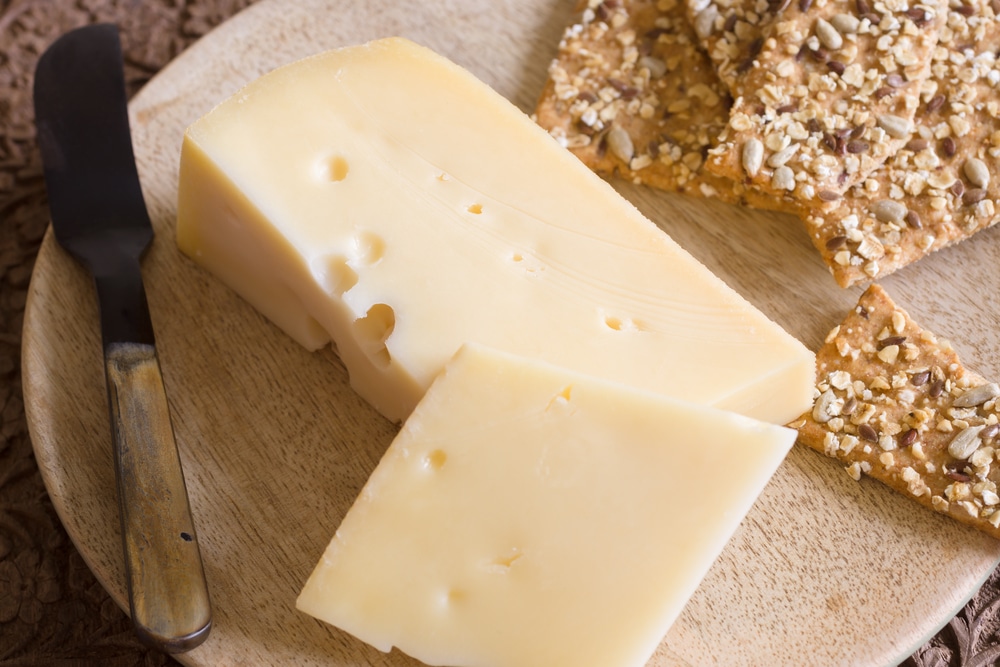
Jarlsberg is often mistaken for Swiss cheese, but it is an entirely different product. It’s sweeter and stronger than Emmentaler cheese. This cheese similar to Emmentaler cheese because it forms holes and has the same consistency and texture.
It’s a new member of the cheese family. It was born in the 1950s. Originally from Jarlsberg, Norway, it was created by Anders Larsen Bakke.
Jarlsberg looks like Emmental because of its cherry-sized “eyes,” which is where it got the name “baby Swiss.” Beneath the rind of this cheese, you’ll find a semi-firm yellow interior that tastes buttery and has a rich texture and a mild, nutty flavor.
You can use these cheeses interchangeably in sandwiches, fondues, pizzas, burgers, and especially hot dishes. The best thing is that Jarlsberg is an all-around cheese for its mild flavor and soft texture. Eating it raw as a snack is great too.
Jarlsberg cheese is a good choice because it has lower fat content than regular cheese. Only one ounce satisfies 15% of the daily recommended intake of calcium, so it supports your bone health.
Can’t find Jarlsberg cheese but need something similar? See excellent jarlsberg cheese substitute.
Cheddar Cheese
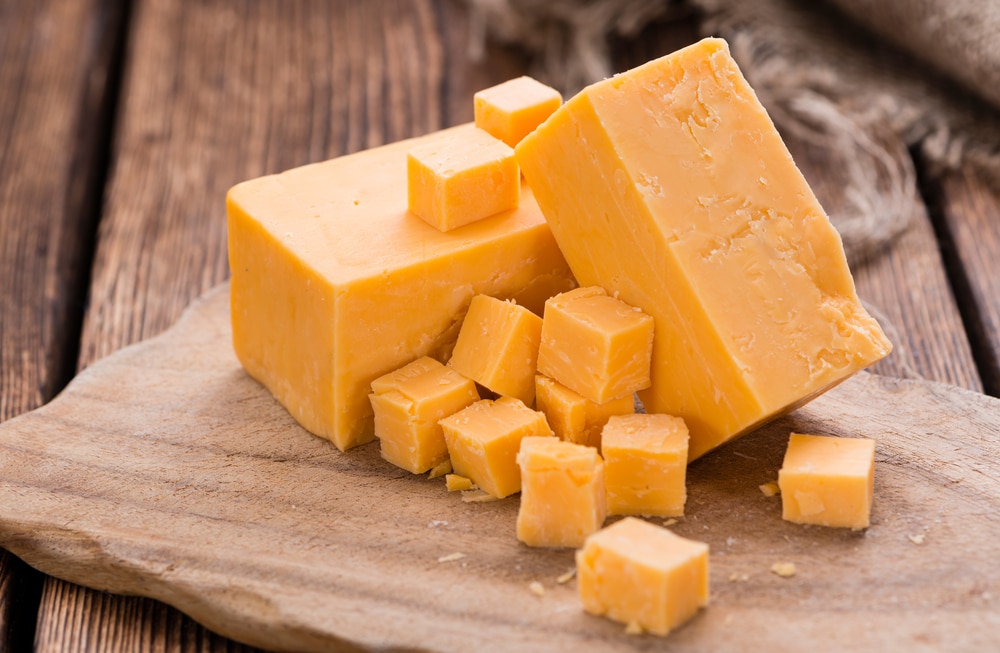
This article wouldn’t be complete unless we mentioned cheddar. Cheddar cheese has an interesting history. A long time ago, in an English town called Cheddar, a farmer had forgotten to pick a milk pail in a cave. When he went back to the cave, it had turned into a cheese block with a gorgeous golden color like the one that’s usually seen today in cheddar cheese.
In the past, England was the only place where people could make cheese and call it cheddar cheese because it wasn’t protected like other cheese names or brands. It’s now the most widely produced and eaten cheese in the world.
It has a slightly crumbly texture if it’s properly cured. If it’s too young, the texture is smooth. The taste gets sharper as it ages between 9 and 24 months. The color can range from white to pale yellow.
It’s similar to Emmental because cheddar has a sharp, buttery punch and a creamy texture. It doesn’t have large eyes as Emmental does, but it’s still good on salads and baked dishes. Its gorgeous color adds a nice aesthetic to any dish.
Cheddar has a lot of nutrients; it’s got vitamins K, A, B2, and D, and the minerals calcium, zinc, and potassium. This superfood not only gives you a lot of protein and calories but also does wonders for your bones.
Gouda
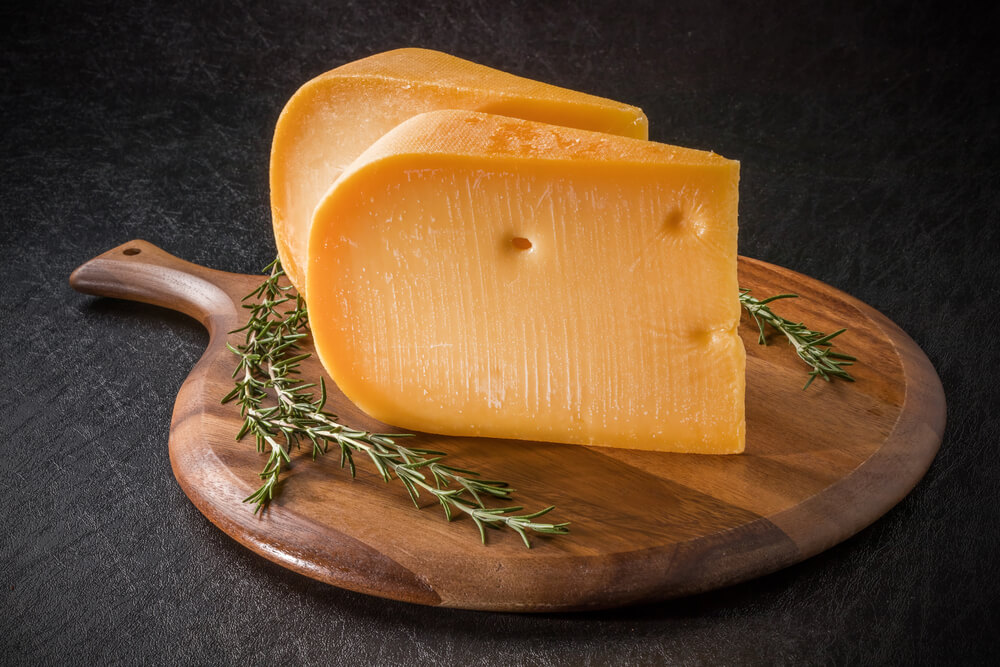
Another good Emmental substitute is Gouda, which has contributed a lot to the world’s culinary culture since the 12th century. It was named for the town of Gouda in the Netherlands, which is where it was first made.
It has a creamy, nutty, and sweet note, which is perfectly delivered with a smooth texture. It’s pale ivory, and tastes bland and creamy, except for aged Gouda, which has a darker gold color, tastes stronger and saltier, and has a harder texture. You can also find low-fat versions of Gouda.
Gouda is widely imitated in other cheese-producing countries – true Gouda has “Holland” stamped on the rind. If it’s made on a farm rather than in a factory, it has an imprint of the word “Boerenkaas,” which means “farmer’s cheese.”
You can add it to sandwiches, soups, fondues, and salads like Emmental cheese. It works well with grapes, wine, and stronger drinks because of its sweet tone.
One ounce of Gouda cheese gives you seven grams of protein, which provides energy and helps repair tissues and cells. The calcium in Gouda prevents blood clots, helps muscles contract, and stabilizes blood pressure.
Can’t find Gouda? See list of cheese similar to gouda.


